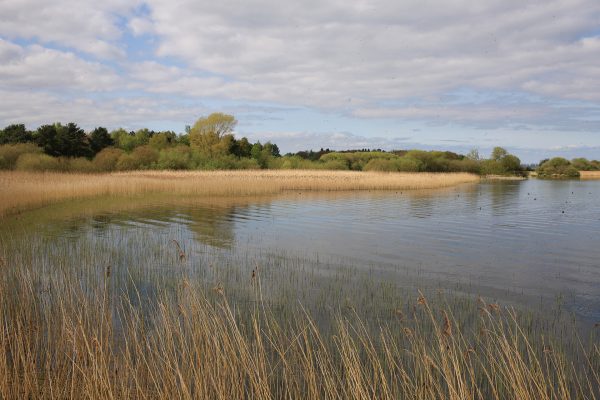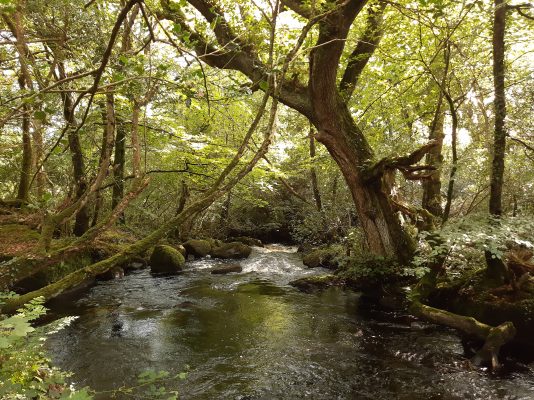
World Wetlands Day stands as a global reminder of the crucial role wetlands play in maintaining biodiversity and ecological balance. These vibrant ecosystems are especially critical for iconic Irish species such as the Curlew, a bird whose calls are synonymous with Irish wetlands yet is alarmingly diminishing from our landscapes. The diversity of wetland habitats means they support an array of Irish species, providing routes for Otters to navigate the landscape, breeding grounds for amphibians, and food and shelter to multiple bird species such as Lapwings, Snipes and Kingfishers.
Wetlands are ecosystems characterised by the presence of water, either seasonally or permanently, that plays a central role in determining the environment’s soil characteristics, plant life, and animal species. They are transitional zones between terrestrial and aquatic environments, where the water table is usually at or near the surface, or the area is covered by shallow water.
Wetlands serve multiple critical functions, including water purification, flood protection, carbon storage, and support for a rich biodiversity. They provide habitat for a wide array of plant and animal species, many of which are unique to these environments. Wetlands also play a crucial role in the hydrological cycle, influencing water levels and flow within landscapes.
There are several types of wetlands, broadly classified into:
Wetlands are among the most productive ecosystems in the world, comparable to rain forests and coral reefs. They are crucial for the survival of countless species of migratory birds, serve as breeding grounds for fish, and support a wealth of biodiversity. Despite their ecological value, wetlands are among the most threatened ecosystems, facing risks from drainage for agriculture, urban development, pollution, and climate change. Conservation and restoration of wetlands are vital for maintaining their ecological functions and the services they provide.

Despite the recognised importance of wetlands, there are countless examples of wetlands being mismanaged and destroyed. One thorn in the side of the Irish Wildlife Trust is the Arterial Drainage Act.
The Arterial Drainage Act, introduced in 1945 by Douglas Hyde, Ireland’s inaugural president, remains intact despite growing evidence of its negative impact on river ecosystems. The Irish Wildlife Trust (IWT) has advocated for reform to better protect these fragile ecosystems and reform the arterial drainage act. Arterial drainage programs have created enduring harm on the rivers of Ireland, drastically transforming riverine habitats. The interventions have stripped rivers of their natural characteristics such as meanders and surrounding riparian zones, as the arterial drainage efforts sought to widen and deepen rivers and their tributaries to facilitate agricultural land drainage.
The consequences of these arterial drainage operations are both short-term and long-term. In the short term, phenomena like increased sedimentation disrupt the chemical balance of water. However, the long-term repercussions involve fundamental alterations to the rivers’ hydromorphology and biological integrity—changes that are often irreversible and may take decades to amend.
Such modifications to river channels, particularly straightening, have detrimental impacts on aquatic life. Fish species, adapted to the river’s original winding paths, find themselves without adequate refuge during high rainfall or flooding events, as the accelerated water flow overpowers them. The removal of essential riparian habitats triggers numerous deleterious effects. Riparian zones provide multiple functions to the ecosystem. The vegetation is integral to bank stabilisation, provision of food via leaf litter and terrestrial insects for species like trout, and shading to moderate water temperatures in response to climate change. These vegetated buffers also play a crucial role in pollutant filtration, capturing sediment and nutrients effectively. Moreover, riparian zones serve as essential habitats for terrestrial and aquatic species alike, so their preservation is crucial for maintaining healthy ecological balance. In an era marked by climate and biodiversity crises, the protection and recognition of riparian and other wetland habitats in Ireland remains critical to ecological restoration.

The Office of Public Works (OPW) is legally mandated under the Arterial Drainage Act of 1945 to maintain the integrity of rivers, embankments, and flood defences. This obligation compels the OPW to regularly manage over 11,500 km of river channels, ensuring they remain unobstructed to minimise flood risk and secure land drainage. However, this often leads to invasive measures where machinery is employed to remove natural vegetation and alter riverbeds to a state resembling canals more than natural rivers. Despite the OPW’s authority, its practices have raised concerns about its self-regulation, from planning and conducting impact assessments to granting permissions and addressing failures, highlighting the need for a more balanced and ecologically sensitive approach to river management. This is why the IWT supports the reform of the Arterial Drainage Act.
Aside from the localised ecological harm, the alteration of riverine systems has an effect downstream – increased risk of flooding. The challenge of flooding, exacerbated by climate change, demands a shift in focus towards safeguarding residential and commercial properties rather than agricultural land.
The principle of natural flood management, which emphasises slowing water flow by increasing roughness in the river system, contrasts sharply with current practices that smooth river paths and accelerate water movement. This approach, endorsed by research and experts, highlights the counterproductive nature of enhancing upstream drainage, which ultimately elevates flood risks downstream. Adopting widespread water retention practices in agriculture could significantly mitigate these risks.
The legislative framework currently in place was established before the advent of critical EU environmental directives and at a time when the emerging crises of biodiversity and water quality were not central concerns. Given the urgent challenges posed by climate change, it’s clear that programs permitting significant environmental modifications are unsustainable. Drainage of peatlands is particularly troubling, not only because it converts these vital areas into major sources of carbon emissions but also because it exacerbates flooding issues. Healthy, ecologically intact peatlands act as natural sponges, absorbing significant amounts of water and mitigating flood risks.
In 2021, the Irish Wildlife Trust initiated the petition to amend the Arterial Drainage Act, seeking governmental engagement that unfortunately did not materialise, leaving the Act unchanged. Despite this, significant advancements in environmental legislation have been made, notably with the soon to be introduced of the EU’s Nature Restoration Law. This law, a cornerstone of the EU biodiversity strategy, sets forth explicit objectives for the rehabilitation of deteriorated ecosystems, prioritising those essential for carbon capture and the reduction of natural disaster impacts.
The Nature Restoration Law ambitiously targets wetland restoration, focusing on enhancing river connectivity. It proposes the elimination of barriers that impede the natural flow of surface waters, aiming to restore at least 25,000 kilometres of rivers to a free-flowing state by 2030. This will involve removing obsolete barriers and revitalising floodplains and wetlands, pivotal steps towards the rejuvenation of critical aquatic ecosystems. To align with these goals and further environmental progress, a reassessment of the Arterial Drainage Act is imperative.